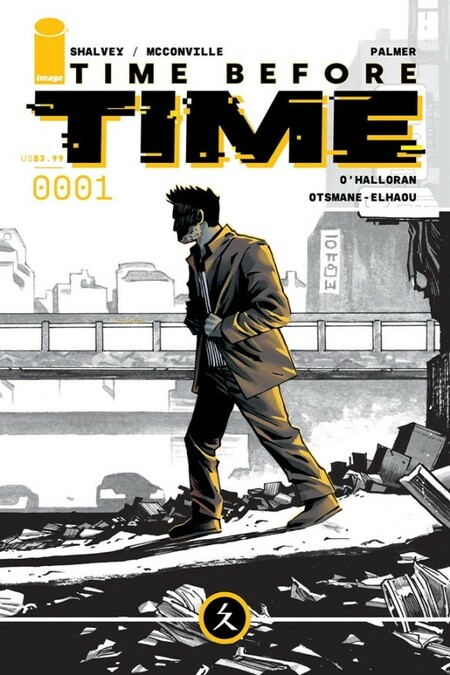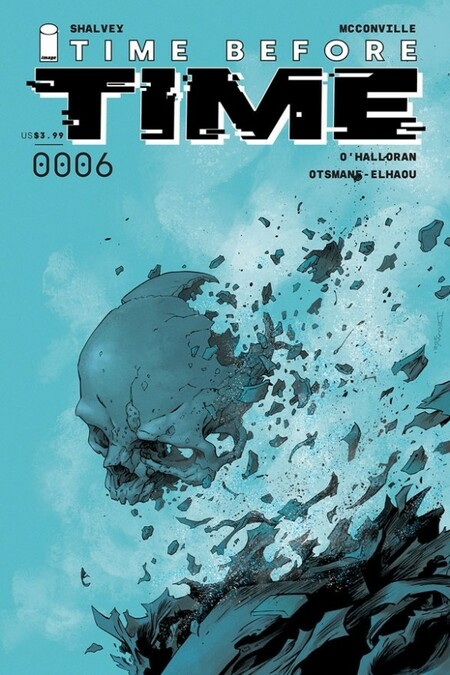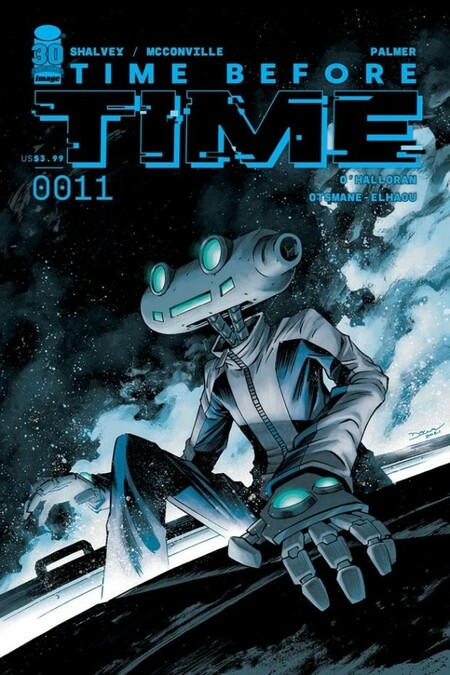When you’ve consumed a lot of science fiction in a variety of forms, it’s very hard to be surprised, let alone thrilled and astounded by any one story.
It’s not that the new stories you come across are bad; they’re usually far from it, refreshingly original takes on well-worn sci-fi tropes that remind you how endlessly expansive the storytelling possibilities in the genre are and which suck you into their worlds so completely that you are enraptured for however long they hold you in their narrative spell.
But sometimes, a story grabs you so completely and with some power and force that you are often compelled to sit back in wonder that someone has not only come up with this imaginatively rich premise but they have made good on it, exacting every last gram of storytelling promised from it.
Such a story is Time Before Time, a to-date 15 issue-long series that kicked off in May 2021 predicated on the simple idea that time travel is real and that far from being a wholly idealistic concept that faces occasional attack from less noble souls that it has been commoditised like so many inventions before it and is used by criminal gangs for their own capitalistically selfish purposes, with each of them controlling a territory of time rather than a geographic spread.
In this world where time travel is a tool for criminal enrichment and advancement, people are at the mercy of the gangs who traffic people across centuries and sometimes millennia, and who smuggle technology to the highest bidder, repercussions be damned.
Time Before Time, from the talented team of writers Declan Shalvey and Rory McConville and artist Joe Palmer – with lettering by Hassan Otsmane-Elhaou and colouring by Chris O’Halloran – takes this breathtakingly cool though morally troubling idea and runs with it, delivering up a story with considerable twists and turns and action that pulsates with some great ethical conundrums.
So rich with a beating heart of ethics and morality is it that much of the time you are left staring in horror at the cruel audacity of these gangs who take something as wondrous as time travel, which could come with so many benefits, and turn it into just another money grabbing scheme where people matter far less than the brutally enforced bottom line.
How true that is comes to the fore very quickly when we meet Tatsuo, a time runner for The Syndicate, which keeps people indentured to them by ledgers that are never cleared – it takes only the smallest of infractions, real or usually imagined, to keep the total going up and never down – who is desperately trying to get free of his heartless employer, along with bestie Oscar, in the hope of living life on his terms.
Ailing like so many others in his line of work thanks to the rigours of crossing centuries in the time it takes the more chonologically bound to cross a room, Tatsuo is troubled by the moral compromises he is called to make especially when he ferries time refugees from more dystopian parts of the future – they more than outnumber the nice parts which, ironically include the here and now so enjoy it while you can – who, like modern day refugees who remains under the thumb of amoral people smugglers, have to keep working for the Syndicate until they have cleared their debts.
Which, of course, never happens, surprise, surprise.
Admitting to each other that they can’t stomach their ethically-free employment any longer, Oscar agrees to Tatsuo’s plan to steal one of the time travelling pods with the hope they can flee someone that the Syndicate, and their rival, the Union, can’t find them, a tricky goal when someone can travel anywhere, any time.
Still, they decide it’s their only way out of hellhole that is 2140 – each criminal group keeps based in a year, rather than a locale – but when they attempt to put their plan into action, well, let’s simply say, things don’t go even remotely according to plan (if you are wondering if all this rushing around through time, might wreck things still further, Time Before Time operates on the very Doctor Who idea that past events have already happened and can’t be altered; the future however? Well … ).
This unforeseen cruelling of what seemed like a foolproof plan sets in train a rip-roaring storyline that fits into a number of discreet but interconnected arcs, all of them brought brilliantly and evocatively to light by artwork that pops from the page and which carries a huge amount of emotional resonance in its technicolour stunning panels.
So pitch-perfect is the world-building in Time Before Time that every single time period, and there’s a lot of hopping between the late 20th century and the middle centuries of the 3000s, comes brutally alive, the artwork adding even more edge to the writing which perfectly captures what it is like to be party to one of the greatest inventions of all time (word use wholly intended) which is hostage, like so much else in our blighted world, to the baser instincts of the human species.
Humanity, it has to be said, doesn’t come smelling like roses out of this story on the whole; time and again, we are privy to how something that could do so much good is employed simply to make someone’s life so miserable.
It’s dispiriting but somehow Time Before Time doesn’t succumb to a potential existential abyss, with hope somehow springing eternal, despite the many setbacks Tatsuo and those he encounters, which should be blunted beyond all hope of redemption.
That’s not to say there isn’t a powerful amount of darkness because there is with the very worst of humanity more often in the ascendancy over the better angels of our nature; yet somehow, Time Before Time doesn’t feel grindingly bleak, though it should do, because somehow, some way, key characters keep finding a way to beat the odds.
Well, temporarily at least, long enough for them to feel like they can find those missing family members or fix the thing that broke time or escape somewhere where the good things we all hope for, can find some sort of realisation.
It is really the driving hope of Tatsuo, and Nadia Wells, a woman who joins in circumstances best left to the reading, that manages to give Time Before Time an air of hopefulness, testament to the ability of our species to look at the very worst of things and still somehow come out the other side ready to try again.
Ending in issue 10, as so many of the issues do, on the mother of all cliffhangers will artwork driving home how alone everyone is no matter how hard they strive for meaningful connection, Time Before Time does a superlative job of blending action, moral conundrum and emotive humanity into one compulsively readable story that underscores that the more things change, the more they stay the same, and yet how, despite all that, the human spirit rises to the occasion once more.
Whether that continues in the following issues will be fascinating since even something as buoyant as the human spirit can’t handle as much as Time Before Time routinely dishes out; we can only hope that even though the world is an evil place, whatever time it is, that somehow people like Tatsuo will find a way through, giving the rest of us hope, through one of the most inventive sci-fi tales to come along in a good long while, that we can do the same should circumstances call on us to do so.


